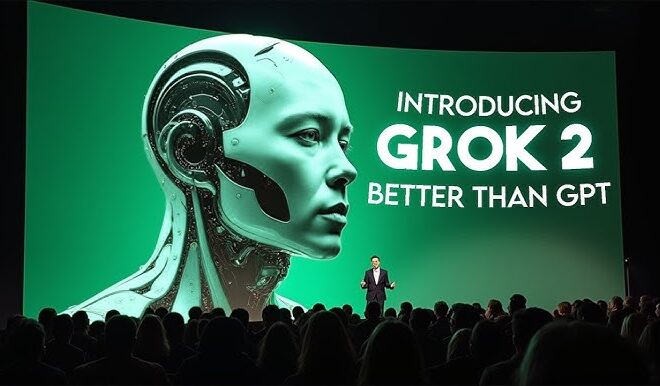
AI Tools in the Workplace: Enhancing Productivity and Innovation
- In today’s rapidly evolving digital landscape, the integration of artificial intelligence (AI) tools has become increasingly prevalent across various industries. From automating mundane tasks to enabling complex data analysis, AI tools offer a wide range of capabilities that are transforming the way we work.
A. Brief overview of AI tools
Artificial intelligence tools encompass a diverse set of technologies designed to mimic human cognitive functions. These tools leverage algorithms and data to perform tasks that traditionally require human intelligence, such as problem-solving, pattern recognition, and decision-making. Examples of AI tools include machine learning algorithms, natural language processing systems, and robotic process automation software.
B. Importance of productivity and innovation in the workplace
Productivity and innovation are critical drivers of success in any organization. Productivity measures the efficiency of resource utilization in achieving desired outcomes, while innovation fuels growth and competitiveness by introducing new ideas, processes, or products. In today’s hyper-competitive business environment, organizations must continuously strive to enhance productivity and foster innovation to stay ahead of the curve.
C. Thesis statement: Exploring how AI tools are revolutionizing workplace dynamics by boosting productivity and fostering innovation.
Against this backdrop, this blog aims to delve into the transformative impact of AI tools on workplace dynamics. Specifically, we will examine how AI tools are revolutionizing traditional workflows by significantly enhancing productivity and fostering a culture of innovation. Through real-world examples and insightful analysis, we will explore the multifaceted ways in which AI technologies are reshaping the modern workplace and driving organizational success.
I. Understanding AI Tools
Artificial intelligence (AI) tools are revolutionizing the way tasks are accomplished and decisions are made in various industries. To grasp their significance fully, it’s essential to understand their fundamental concepts, their varied applications, and the impact they have on modern workplaces.
A. Definition of AI tools and their functionalities
AI tools are software applications or systems that utilize artificial intelligence techniques to perform tasks that typically require human intelligence. These tools leverage algorithms, data, and machine learning models to analyze information, make predictions, and automate processes. Their functionalities span a wide range of capabilities, including natural language processing, computer vision, pattern recognition, and predictive analytics.
B. Types of AI tools commonly used in the workplace

- Machine Learning Algorithms: These algorithms enable systems to learn from data and make predictions or decisions without explicit programming. They are commonly used for tasks such as classification, regression, and clustering.
- Natural Language Processing (NLP) Systems: NLP systems analyze and understand human language, enabling machines to interpret, generate, and respond to text or speech. They power virtual assistants, chatbots, and sentiment analysis tools.
- Robotic Process Automation (RPA) Software: RPA software automates repetitive, rule-based tasks by mimicking human interactions with digital systems. It is used for tasks like data entry, invoice processing, and report generation.
- Computer Vision Systems: These systems enable machines to interpret and analyze visual information from images or videos. They are used for tasks such as object recognition, image classification, and facial recognition.
- Predictive Analytics Tools: Predictive analytics tools analyze historical data to identify patterns and trends, allowing organizations to make informed decisions and predictions about future events or outcomes.
C. Examples of AI tools and their applications
- Google’s TensorFlow: TensorFlow is an open-source machine learning framework developed by Google. It is widely used for building and training machine learning models for various applications, including image recognition, natural language processing, and predictive analytics.
- IBM Watson: IBM Watson is a cognitive computing platform that uses natural language processing and machine learning to analyze large volumes of data, understand human language, and provide insights for decision-making. It is used in industries such as healthcare, finance, and retail.
- UiPath: UiPath is a leading robotic process automation (RPA) software platform that automates repetitive tasks and workflows across applications. It is used for tasks such as data entry, invoice processing, and customer service automation.
- Amazon Rekognition: Amazon Rekognition is a computer vision service that analyzes images and videos to detect objects, faces, text, and scenes. It is used for applications such as content moderation, security surveillance, and visual search.
- Salesforce Einstein: Salesforce Einstein is an AI-powered platform that enhances customer relationship management (CRM) by providing predictive insights, recommendations, and automation capabilities. It helps organizations personalize marketing campaigns, forecast sales opportunities, and improve customer satisfaction.
III. Enhancing Productivity with AI Tools
In the modern workplace, the integration of AI tools is reshaping how tasks are executed, workflows are managed, and data is analyzed. By automating repetitive tasks, streamlining workflows, and enabling real-time data analysis, AI tools play a pivotal role in enhancing productivity and driving efficiency across various domains.
A. Automation of Repetitive Tasks
- Examples of Tasks Automated by AI Tools
- Data Entry: AI-powered software can automatically extract information from documents and input it into databases or spreadsheets, eliminating the need for manual data entry.
- Email Management: AI-based email assistants can categorize, prioritize, and respond to emails, reducing the time spent on inbox management.
- Customer Support: Chatbots equipped with natural language processing capabilities can handle routine customer inquiries and provide timely responses 24/7.
B. Streamlining Workflows
- Case Studies Illustrating Workflow Improvements
- Manufacturing Industry: AI-driven process optimization tools have enabled manufacturers to identify bottlenecks, minimize downtime, and optimize production schedules, resulting in increased operational efficiency and cost savings.
- Marketing Department: AI-powered marketing automation platforms have streamlined campaign management, from audience segmentation and content personalization to campaign performance analysis, leading to higher conversion rates and ROI.
- Healthcare Sector: AI-enabled electronic health record (EHR) systems have streamlined clinical workflows, enabling healthcare providers to access patient information, make diagnoses, and prescribe treatments more efficiently, ultimately improving patient outcomes.
C. Real-time Data Analysis
- Benefits of AI-Driven Data Analysis for Productivity
- Faster Insights: AI algorithms can analyze large volumes of data in real-time, enabling organizations to extract actionable insights and make data-driven decisions more quickly.
- Predictive Analytics: By leveraging machine learning models, AI tools can forecast trends, identify patterns, and anticipate future events, empowering businesses to proactively address challenges and capitalize on opportunities.
- Improved Accuracy: AI-powered data analysis reduces the risk of human errors and biases, ensuring that decisions are based on accurate and reliable information, which ultimately enhances productivity and reduces costs.
IV. Fostering Innovation through AI Tools
Innovation lies at the heart of organizational growth and competitiveness. AI tools not only enhance productivity but also foster a culture of innovation by providing novel ways to generate ideas, make informed decisions, and facilitate collaboration among team members.
A. Facilitating Creative Ideation
- Tools for Brainstorming and Idea Generation
- Idea Management Platforms: AI-powered idea management platforms facilitate the collection, organization, and evaluation of ideas from employees across the organization. These platforms use algorithms to prioritize ideas based on criteria such as feasibility, impact, and alignment with strategic objectives.
- Virtual Brainstorming Tools: AI-driven virtual brainstorming tools leverage natural language processing and machine learning to facilitate collaborative ideation sessions in virtual or hybrid work environments. These tools can generate creative prompts, facilitate group discussions, and capture ideas in real-time.
B. Predictive Analytics for Strategic Decision-Making
- How AI Tools Aid in Forecasting and Planning
- Demand Forecasting: AI-driven predictive analytics tools analyze historical sales data, market trends, and external factors to forecast future demand for products or services. This enables organizations to optimize inventory levels, allocate resources effectively, and minimize stockouts or overstock situations.
- Financial Planning and Budgeting: AI-powered financial planning tools use machine learning algorithms to analyze financial data, identify patterns, and generate accurate forecasts for revenue, expenses, and cash flow. This helps organizations make informed decisions about resource allocation, investment strategies, and risk management.
- Risk Management: AI tools can analyze vast amounts of data from various sources to identify potential risks and opportunities, allowing organizations to anticipate and mitigate risks more effectively. Whether it’s market volatility, regulatory changes, or cybersecurity threats, AI-driven risk management systems provide valuable insights to support strategic decision-making.
C. Improving Collaboration and Knowledge Sharing

- Platforms that Promote Collaboration Among Team Members
- AI-Powered Collaboration Tools: AI-driven collaboration tools enhance teamwork by providing features such as real-time document editing, project management, and communication functionalities. These tools leverage AI to automate repetitive tasks, suggest relevant documents or resources, and facilitate seamless communication and collaboration among remote or distributed teams.
- Knowledge Management Systems: AI-powered knowledge management systems enable organizations to capture, organize, and share knowledge effectively across the organization. These systems use natural language processing and machine learning algorithms to analyze and categorize information, making it easier for employees to find relevant expertise, best practices, and institutional knowledge.
V. Case Studies: Successful Implementation of AI Tools
Real-world examples illustrate the tangible benefits of implementing AI tools in various organizational contexts. Here are three case studies showcasing successful implementations of AI tools in different companies.
A. Company X: Boosting Productivity with AI-Powered Task Management
Background: Company X, a leading technology firm, faced challenges with task prioritization, resource allocation, and project management due to the complexity and scale of its operations.
Solution: Company X implemented an AI-powered task management system that leveraged machine learning algorithms to analyze task dependencies, workload distribution, and project timelines. The system automatically prioritized tasks, assigned resources, and optimized project schedules based on factors such as deadlines, resource availability, and task complexity.
Results:
- Significant improvement in task prioritization and resource allocation, leading to a 20% increase in overall productivity.
- Reduction in project delays and bottlenecks, resulting in faster time-to-market for new products and features.
- Enhanced collaboration and communication among team members, leading to greater transparency and alignment on project goals and objectives.
B. Company Y: Driving Innovation through AI-Driven Data Analytics
Background: Company Y, a multinational retail corporation, sought to leverage data analytics to gain insights into customer behavior, market trends, and product preferences.
Solution: Company Y implemented an AI-driven data analytics platform that integrated advanced machine learning algorithms for predictive modeling, customer segmentation, and demand forecasting. The platform analyzed vast amounts of transactional data, social media interactions, and demographic information to identify emerging trends, anticipate customer needs, and optimize inventory management.
Results:
- Improved understanding of customer preferences and buying patterns, leading to more targeted marketing campaigns and personalized shopping experiences.
- Enhanced inventory management and supply chain optimization, resulting in reduced stockouts, lower inventory carrying costs, and increased profitability.
- Accelerated innovation cycles and product development initiatives, fueled by data-driven insights and market intelligence.
C. Company Z: Enhancing Collaboration with AI-Enabled Communication Tools
Background: Company Z, a global consulting firm, faced challenges with communication, knowledge sharing, and collaboration among its geographically dispersed teams.
Solution: Company Z deployed an AI-enabled communication platform that leveraged natural language processing and sentiment analysis to facilitate real-time collaboration, knowledge sharing, and decision-making. The platform provided features such as intelligent chatbots, virtual meeting assistants, and smart search capabilities to streamline communication and enhance productivity.
Results:
- Improved communication and information sharing across teams and departments, leading to faster decision-making and problem-solving.
- Enhanced employee engagement and satisfaction, as employees were able to access relevant information and resources more efficiently.
- Reduction in email overload and meeting fatigue, as AI-powered tools automated routine tasks and facilitated asynchronous communication channels.
VI. Challenges and Considerations
While AI tools offer immense potential for enhancing productivity and innovation in the workplace, their adoption also poses certain challenges and considerations that organizations must address to ensure responsible and ethical use.
A. Ethical Implications of AI Tools in the Workplace
Ethical Dilemmas: As AI tools become more integrated into workplace processes, ethical dilemmas may arise regarding issues such as bias, fairness, transparency, and accountability. Organizations must consider the ethical implications of AI-driven decision-making and ensure that their use of AI tools aligns with ethical principles and values.
Employee Well-being: The widespread deployment of AI tools in the workplace may raise concerns about the impact on employee well-being, including issues related to job satisfaction, autonomy, and job security. Organizations must prioritize the ethical treatment of employees and take steps to mitigate any negative consequences of AI tool usage.
B. Addressing Concerns about Job Displacement
Automation of Jobs: One of the primary concerns associated with AI tools is the potential for job displacement, as automation may render certain tasks or roles obsolete. While AI tools can streamline workflows and increase efficiency, they may also lead to workforce restructuring and the need for reskilling or upskilling employees to remain relevant in the labor market.
Human-AI Collaboration: Organizations must strive to strike a balance between automation and human intervention, fostering a collaborative work environment where AI tools augment human capabilities rather than replacing them entirely. This requires thoughtful planning and investment in workforce development initiatives to prepare employees for the changing nature of work.
C. Ensuring Data Privacy and Security in AI Tool Usage
Data Privacy Concerns: AI tools rely heavily on data to function effectively, raising concerns about data privacy and confidentiality. Organizations must establish robust data governance frameworks and adhere to regulations such as GDPR (General Data Protection Regulation) to ensure the responsible collection, storage, and use of data in AI tool usage.
Cybersecurity Risks: The increased reliance on AI tools introduces new cybersecurity risks, as malicious actors may exploit vulnerabilities in AI algorithms or data pipelines to compromise sensitive information or disrupt business operations. Organizations must implement robust cybersecurity measures to protect against threats such as data breaches, ransomware attacks, and algorithmic manipulation.
Addressing these challenges and considerations requires a multidisciplinary approach, involving collaboration between business leaders, data scientists, ethicists, and policymakers to develop ethical guidelines, regulatory frameworks, and best practices for the responsible use of AI tools in the workplace.
VII. Future Trends and Opportunities
As AI technologies continue to advance at a rapid pace, the future holds exciting possibilities for transforming the workplace and driving innovation. Organizations that embrace these emerging trends and opportunities will be well-positioned to thrive in the AI-driven economy.
A. Emerging AI Technologies Poised to Transform the Workplace
1. Augmented Intelligence: Augmented intelligence, which combines the strengths of human intelligence with AI capabilities, will become increasingly prevalent in the workplace. This approach leverages AI tools to enhance human decision-making, creativity, and problem-solving, leading to more effective collaboration and innovation.
2. Autonomous Systems: Autonomous systems, powered by AI algorithms and robotics, will revolutionize various industries by automating complex tasks and processes. From autonomous vehicles and drones to robotic assistants and smart factories, these systems will redefine how work is performed and create new opportunities for efficiency and productivity.
3. Quantum Computing: Quantum computing has the potential to unlock unprecedented computing power, enabling organizations to tackle complex problems and process massive datasets at unprecedented speeds. As quantum computing technologies mature, they will open up new frontiers in AI research, optimization, and simulation, paving the way for breakthroughs in areas such as drug discovery, materials science, and financial modeling.
B. Potential Applications of AI in Driving Future Productivity and Innovation
1. Personalized Learning and Development: AI-powered adaptive learning platforms will personalize training and development programs to meet the unique needs and preferences of individual employees, enhancing learning outcomes and professional growth.
2. Predictive Maintenance: AI-driven predictive maintenance systems will anticipate equipment failures and optimize maintenance schedules to minimize downtime, reduce maintenance costs, and prolong the lifespan of critical assets.
3. Autonomous Decision-Making: AI algorithms will increasingly be entrusted with autonomous decision-making authority in areas such as finance, healthcare, and cybersecurity, augmenting human expertise and accelerating decision-making processes.
C. Strategies for Organizations to Stay Ahead in the AI Revolution
1. Invest in AI Talent: Organizations must invest in recruiting, training, and retaining top AI talent, including data scientists, machine learning engineers, and AI ethicists, to drive innovation and maintain a competitive edge in the AI revolution.

2. Foster a Culture of Experimentation: Cultivating a culture of experimentation and risk-taking is essential for organizations to explore new AI technologies, test innovative solutions, and learn from both successes and failures.
3. Embrace Ethical AI Practices: Prioritizing ethical AI practices and responsible AI governance is crucial for building trust with stakeholders, mitigating risks, and ensuring that AI technologies are deployed in a manner that aligns with organizational values and societal norms.
By embracing emerging AI technologies, identifying potential applications, and implementing strategic initiatives, organizations can harness the transformative power of AI to drive future productivity, innovation, and growth.
VIII. Conclusion
As we conclude our exploration of the role of AI tools in the workplace, it’s evident that these technologies hold tremendous potential for enhancing productivity, fostering innovation, and reshaping the future of work.
A. Recap of the Role of AI Tools in Enhancing Productivity and Fostering Innovation
Throughout this discussion, we have seen how AI tools are revolutionizing traditional workflows by automating repetitive tasks, streamlining processes, and enabling real-time data analysis. From boosting productivity with AI-powered task management to driving innovation through data analytics, these tools have demonstrated their ability to empower organizations to achieve their goals more efficiently and effectively.
B. Call to Action for Organizations to Embrace AI Technologies Responsibly
However, with great power comes great responsibility. As organizations harness the potential of AI tools, it’s imperative that they do so responsibly. This entails prioritizing ethical considerations, addressing concerns about job displacement, and ensuring data privacy and security. By embracing AI technologies responsibly, organizations can build trust with stakeholders, mitigate risks, and foster a culture of innovation that benefits both employees and society as a whole.
C. Final Thoughts on the Future of AI in the Workplace
Looking ahead, the future of AI in the workplace is bound to be characterized by continued innovation, disruption, and transformation. Emerging technologies such as augmented intelligence, autonomous systems, and quantum computing will redefine how work is performed and create new opportunities for productivity and innovation. As organizations adapt to these changes, they must remain agile, adaptable, and forward-thinking, embracing AI technologies as powerful tools for driving future success and staying ahead in the ever-evolving digital landscape.
In conclusion, the journey towards leveraging AI tools in the workplace is just beginning, and the possibilities are limitless. By harnessing the transformative power of AI responsibly and proactively, organizations can unlock new opportunities, drive innovation, and shape a brighter future for work and society.














